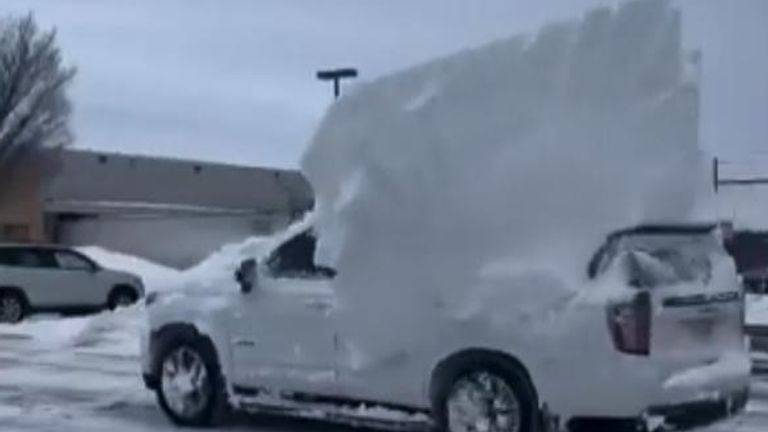Military police are guarding a major intersection in the US city of Buffalo after residents continued driving through deep snow despite pleas from local officials for them not to do so.
At least 64 people are now dead bomb whirlwind — the deadliest U.S. storm in at least two generations.
An additional two inches of snow is expected by the end of Tuesday in Erie County, which includes Buffalo and its 275,000 residents.
“Please, please do not drive in the city of Buffalo unless you are an emergency responder,” County Executive Mark Polonkaz said at a news conference.
“Too many people are ignoring the ban,” he added, describing the storm as “probably the worst of our lifetimes”.
“I’ve been told that 100 military police are being mobilized as well as additional troops from the New York State Police,” Mr Poloncarz told reporters.
They will be located at city entrances and major intersections, preventing drivers from passing.
“Please, please stay at home,” Mr Poloncarz added, saying ensuring access for emergency vehicles was a priority.
The office of Buffalo Mayor Byron Brown announced on Tuesday that seven more people had been killed by the storm, bringing the city’s total to 27. At least seven other people were killed in the suburbs.
Bodies have been found in cars and houses – some dead while shoveling snow.
Four more people have died in Canada after a bus overturned on icy roads in British Columbia.
Some people have died because ambulances were unable to reach them in time for medical emergencies.
A snowstorm in 1977 killed as many as 29 people in the area.
National Weather Service meteorologist Bob Oravec said Tuesday’s snow could be the last.
“It’s going to get warmer soon. Highs of 8C by Thursday. 12C by Saturday.”
President Joe Biden has authorized the federal government to support New York state, where tens of thousands of people have lost power.
Mr Poloncarz said some people had been trapped in their cars for more than two days, making it difficult for emergency services to reach them.
read more:
Life on the road as New York State hits extreme cold
New York Governor Kathy Hochul called the storm “once in a lifetime.”
She added that it and another major snowstorm more than a month ago brought almost as much snow as the region can expect through the winter.
At one point, Buffalo was getting two to three inches of snow an hour.
Nearly 4,000 flights were canceled Monday, exacerbated by Southwest’s cancellations, with 70% of those flights not running as planned, according to tracking site FlightAware.
Tens of thousands of homes and businesses were without power.
Jim Dale, senior meteorologist at the Met Office, told Sky News: “I’d say it’s a once-in-a-lifetime experience. I think we’re probably going to see more of these kinds of events than we’re used to. That.
“In this case, it’s all about the misalignment of the polar vortex in the North Pole. So it basically means that the polar air is flowing south.
“We saw it coming before it got there. But the actual shift from what you might call mild conditions to absolute freezing happened within an hour in some states, so you went from say 10 to 15 degrees down to -20 soon.”
